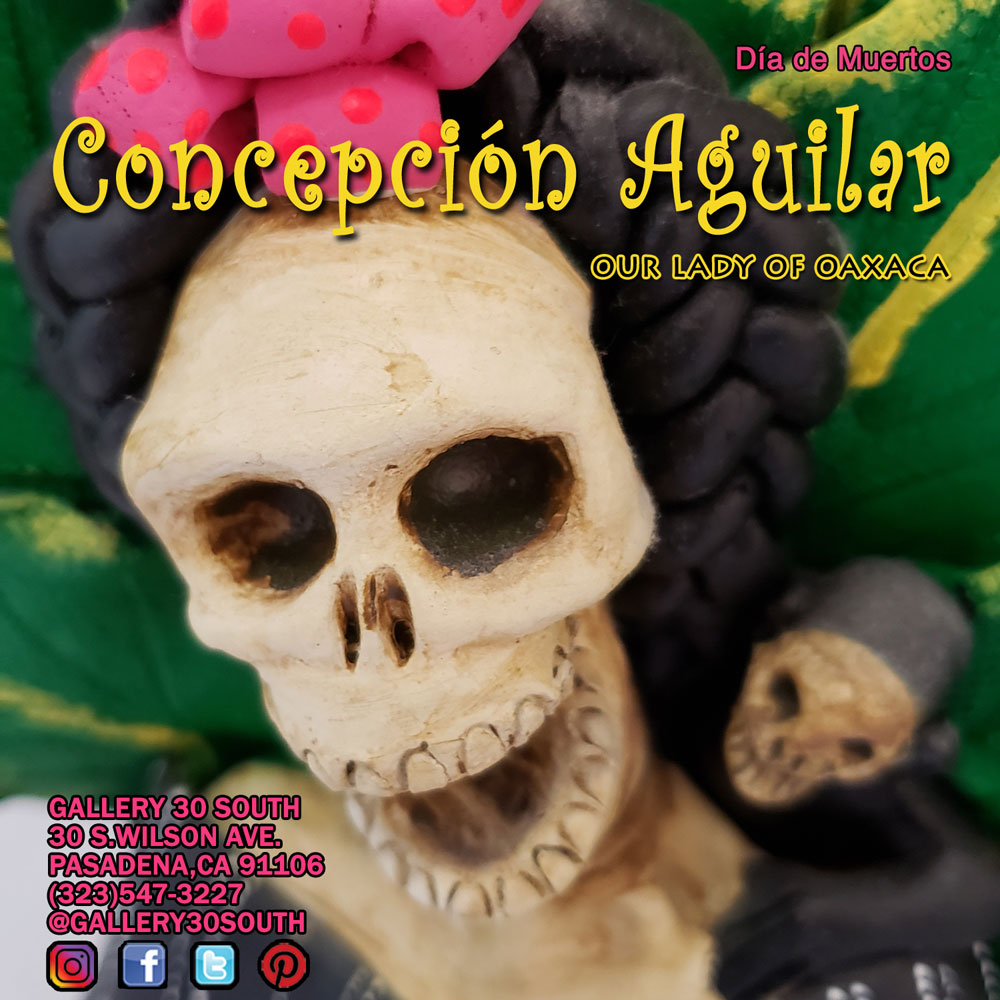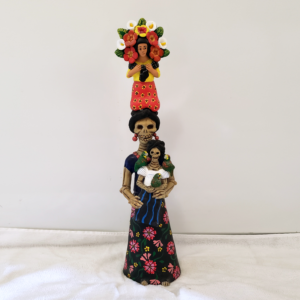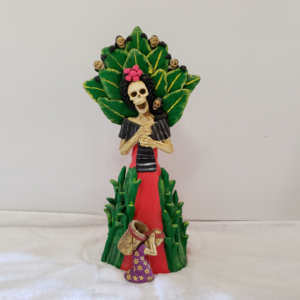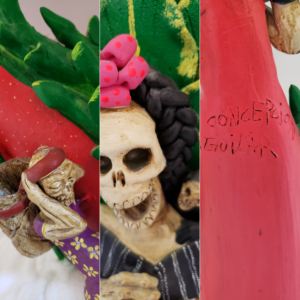
30 Oct Concepción Aguilar: Our Lady of Oaxaca
A Showcase of Mexican Ceramics
Limited Pop Up Exhibition
Concepción Aguilar, the youngest of the famous Aguilar Sisters, was just nine when her mother, Isaura Alcantara Diaz, died without teaching her the skills she had previously passed on to her three other daughters. However, Concepción developed her incredible skill with clay first by imitating her sisters and then constantly pushing herself to further develop her talent. Perhaps because of her dedication to creativity, she has distinguished her own work from that of her famous sisters. Concepción’s pieces are without question the most detailed of her generation, and many critics would even argue that she is the most innovative artist among her talented family.
Concepción’s work has gained her recognition since the late 1980s due to its grace and delicacy. Her favorite subject matter includes virgins, devils, flower women, and bugs. In 1990, she received an award for her work from the National Museum of Popular Arts and Industries in Mexico City. She has exhibited in the United States, Canada, Denmark, and several other countries for many years. The three large pieces in this exhibition were produced in 2013.
-
Concepción Aguliar
Frida y las Mariposas
hand-sculpted clay ceramics
18 x 9.5 x 5 in.
$725
-
Concepción Aguliar
Frida y las Mariposas (details)
hand-sculpted clay ceramics
18 x 9.5 x 5 in.
$725
-
Concepción Aguliar
Frida y los Papagayos
hand-sculpted clay ceramics
18 x 4.5 x 4.25 in.
$600
-
Concepción Aguliar
Frida y los Papagayos (details)
hand-sculpted clay ceramics
18 x 4.5 x 4.25 in.
$600
-
Concepción Aguliar
Frida y los Monos
hand-sculpted clay ceramics
18 x 8.25 x 6.5 in.
$650
-
Concepción Aguliar
Frida y los Monos (details)
hand-sculpted clay ceramics
18 x 8.25 x 6.5 in.
$650
Concepción Aguilar lives and works in Ocotlan de Morelos, Oaxaca, Mexico, with her husband, Jorge Sanchez Ruiz. Her incredibly detailed work mostly relates to nature. While she uses pictures for inspiration, she does not copy what they contain. She is noted for her scenes depicting Noah’s Ark and figures depicting Frida Kahlo. Concepción has been producing highly respected and sought-after creations for over 40 years, and has trained her daughter to carry on the family tradition.
Here is an interview with Concepción Aguilar, conducted by Marcia Lucas in 2014.
Isaura Alcantara Diaz (1924-1969) was the original innovator, who made pottery with her husband Jesus Aguila Revilla. Prior to this, the ceramics of Ocotlan de Morelos (and of the Aguilar’s ancestors) was limited to utilitarian items such as dishes and cookware. Isaura thought to make decorative human figures, with Jesus making illustrations which she executed. These figures depict daily activities and other expression of rural village life in Oaxaca, with great detail and vivid colors. Women are generally shown in indigenous garb performing activities such as carrying items, nursing babies, selling in the market and participating in life celebrations. The decorative pieces with their colors and detail came into demand by Mexican folk art collectors including Nelson Rockefeller, who purchased dozens of these pieces in the 1960s and 1970s. Many of these are now in the collections of the San Antonio Museum of Art and the Mexican Museum in San Francisco.
The couple had four daughters Guillermina, Josefina, Irene and Concepción. The three older sisters learned ceramics as young assistants to their mother, and Concepción learned by watching them. They learned their mother’s new style, and as they became older adapted and expanded their individual repertoires to include images of Frida Kahlo, the Virgin of Guadalupe and even prostitutes. These innovations are due in part to the popularity of the pieces among international tourists, a number of which visit the sisters’ studios. These women, in turn, have taught their children and even their grandchildren.
For purchase info contact:
Matt Kennedy
Gallery Director
(323)547-3227
info@gallery30south.com






